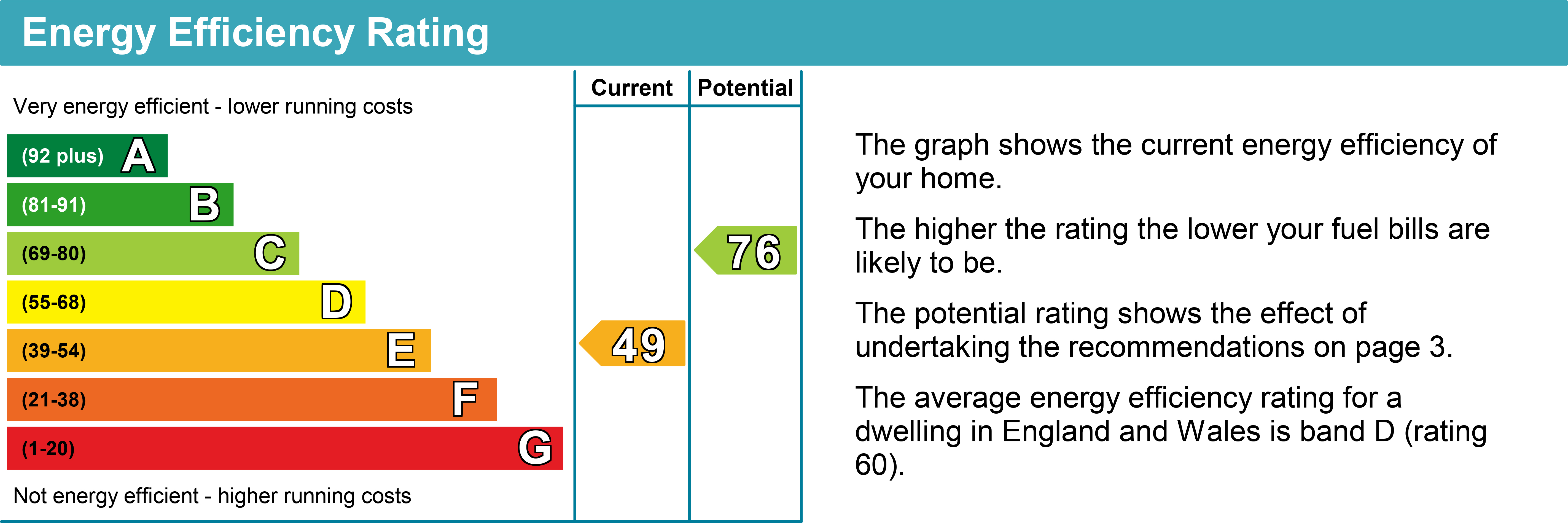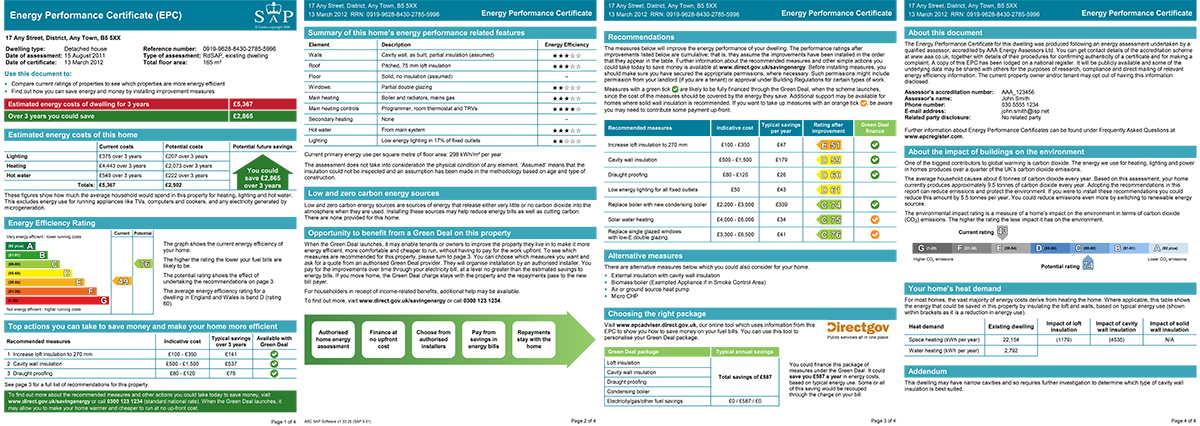The benefits of Energy Performance Certificates for property owners
[edit] Reasons to be EPC-ful.
It’s time for a fresh look at the many ways an Energy Performance Certificate can be beneficial to property owners.
In the same way that Home Reports have become an accepted part of the residential property market so have Energy Performance Certificates (EPCs) become a fundamental tool in the assessment of a building’s essential worth.
The EPC provides a colour-coded and easily understandable rating of a property’s energy usage and its carbon dioxide emissions and, with the Home Report, offers advice on how to reduce carbon footprint, improve the rating – and save money.
This is of increasing importance because, in these energy-conscious and – for many people – cash-strapped times, home buyers are turning to the EPC in the first instance to get an immediate snapshot of what their utility bills are going to be like.
In point of fact, the bare legislative reasons for obtaining an EPC are actually pretty limited and can be summed up as Selling, Renting or Building, in all of which cases the certificate has to be in place before a move is made.
So, before you consider putting a property on the market, letting a home out as a private landlord or re-mortgaging, the energy usage has to be pinned down according to an agreed set of parameters.
What is not so well known is that an EPC can be of considerable worth outwith these regulatory requirements, and can offer valuable guidance on where improvements can be made both on emissions and on costs.
For instance, great numbers of people are looking to home improvements, such as extensions, as an alternative to moving home and an EPC can point the way towards the type of improvement which would create the best value for money.
It is also worth re-certificating post-improvement, so that the upgrades are reflected on the EPC, and a new certificate should be a part of a retrofit assessment.
The certificates can be a deciding factor as part of a grant scheme approval and, if a certificate has expired – its current shelf-life is 10 years – a newer EPC will better reflect current fuel generation practices and costs.
So, it is fair to say that EPCs have, over the years, focused people’s thinking about the profligacy of our energy use, and it is worth considering other ways of moving the little green arrows of current and potential consumption from G up towards A.
The Energy Saving Trust, which holds the public register of EPCs has a wealth of information about how to cut down on our personal impact on the future of the planet, but it also has some snappy, quick fixes for home owners:
- Take back control of the thermostat. By working out when you do and don’t need to heat the property, it is possible to dramatically reduce wastage.
- Wrap it up. Purchasing and tightly fitting an insulation jacket to a hot water storage tank can keep the water hotter for longer and uses less energy.
- Keep it in. Gaps around older windows are an easy route for warm air to escape. Seal those gaps.
- Have a light bulb idea. LED bulbs use significantly less power to produce the same light level as old tungsten bulbs, and they are a simple like-for-like swap.
- Seek the Eco. Many appliances such as white goods have an eco-mode, and you can save considerably by switching TVs and computers off rather than using standby-mode.
- Draw the curtains. Heavy curtains prevent heat loss through glass, especially on large windows or patio doors.
Other energy saving routes may require professional help, such as installing loft and wall insulation, replacing your boiler and installing solar panels. Purchasing efficient white goods – which have ratings like EPCs – will also contribute to your energy reduction.
Many energy providers will now supply a smart meter, which allows you to actively track energy usage and identify energy intensive activities.
It is worth the effort – for the planet as well as your pocket.
Article written by Calum Allmond, Head of Architectural Services at DM Hall Chartered Surveyors supplied via press release from Blueprint Media. Sample EPC's from assets.publishing.service.gov.uk. see external links.
[edit] External Links
- https://assets.publishing.service.gov.uk/government/uploads/system/uploads/attachment_data/file/5996/2116821.pdf
- www.dmhall.co.uk
- https://www.gov.scot/policies/homeowners/home-reports/
- https://www.mygov.scot/energy-performance-certificates
- https://energysavingtrust.org.uk/energy-at-home/
[edit] Related articles on Designing Buildings
- Display energy certificate.
- Emission rates.
- Energy certificates for buildings
- Energy performance certificate EPC
- Energy certificates for buildings.
- Energy efficiency of traditional buildings.
- Energy Performance of Buildings Directive.
- Energy Savings Opportunity Scheme.
- Energy targets.
- Reliance data in EPC contracts
- Target emission rate TER
- What is an EPC contract?
Featured articles and news
RTPI leader to become new CIOB Chief Executive Officer
Dr Victoria Hills MRTPI, FICE to take over after Caroline Gumble’s departure.
Social and affordable housing, a long term plan for delivery
The “Delivering a Decade of Renewal for Social and Affordable Housing” strategy sets out future path.
A change to adoptive architecture
Effects of global weather warming on architectural detailing, material choice and human interaction.
The proposed publicly owned and backed subsidiary of Homes England, to facilitate new homes.
How big is the problem and what can we do to mitigate the effects?
Overheating guidance and tools for building designers
A number of cool guides to help with the heat.
The UK's Modern Industrial Strategy: A 10 year plan
Previous consultation criticism, current key elements and general support with some persisting reservations.
Building Safety Regulator reforms
New roles, new staff and a new fast track service pave the way for a single construction regulator.
Architectural Technologist CPDs and Communications
CIAT CPD… and how you can do it!
Cooling centres and cool spaces
Managing extreme heat in cities by directing the public to places for heat stress relief and water sources.
Winter gardens: A brief history and warm variations
Extending the season with glass in different forms and terms.
Restoring Great Yarmouth's Winter Gardens
Transforming one of the least sustainable constructions imaginable.
Construction Skills Mission Board launch sector drive
Newly formed government and industry collaboration set strategy for recruiting an additional 100,000 construction workers a year.
New Architects Code comes into effect in September 2025
ARB Architects Code of Conduct and Practice available with ongoing consultation regarding guidance.
Welsh Skills Body (Medr) launches ambitious plan
The new skills body brings together funding and regulation of tertiary education and research for the devolved nation.
Paul Gandy FCIOB announced as next CIOB President
Former Tilbury Douglas CEO takes helm.
UK Infrastructure: A 10 Year Strategy. In brief with reactions
With the National Infrastructure and Service Transformation Authority (NISTA).
























